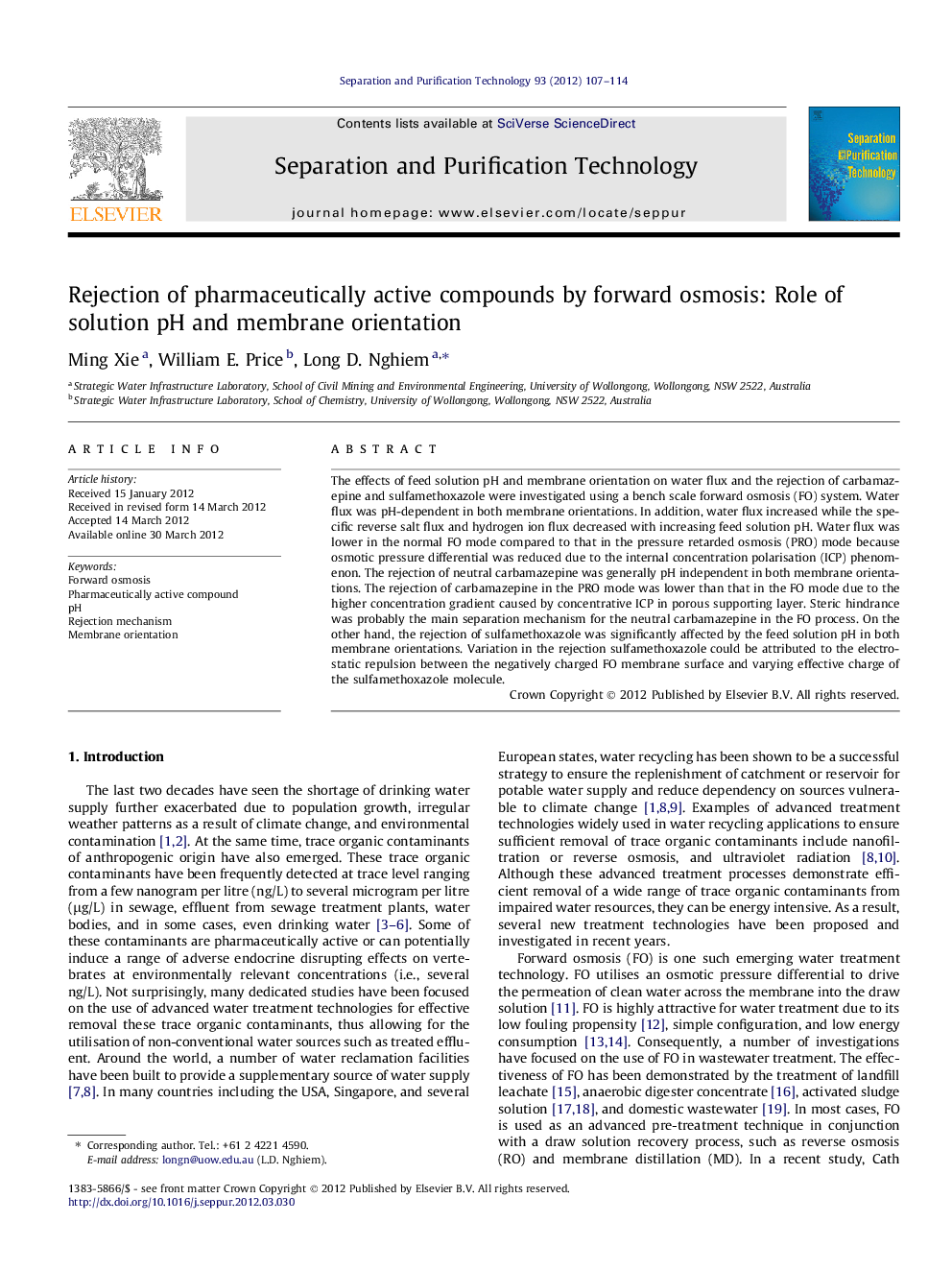| Article ID | Journal | Published Year | Pages | File Type |
|---|---|---|---|---|
| 641977 | Separation and Purification Technology | 2012 | 8 Pages |
The effects of feed solution pH and membrane orientation on water flux and the rejection of carbamazepine and sulfamethoxazole were investigated using a bench scale forward osmosis (FO) system. Water flux was pH-dependent in both membrane orientations. In addition, water flux increased while the specific reverse salt flux and hydrogen ion flux decreased with increasing feed solution pH. Water flux was lower in the normal FO mode compared to that in the pressure retarded osmosis (PRO) mode because osmotic pressure differential was reduced due to the internal concentration polarisation (ICP) phenomenon. The rejection of neutral carbamazepine was generally pH independent in both membrane orientations. The rejection of carbamazepine in the PRO mode was lower than that in the FO mode due to the higher concentration gradient caused by concentrative ICP in porous supporting layer. Steric hindrance was probably the main separation mechanism for the neutral carbamazepine in the FO process. On the other hand, the rejection of sulfamethoxazole was significantly affected by the feed solution pH in both membrane orientations. Variation in the rejection sulfamethoxazole could be attributed to the electrostatic repulsion between the negatively charged FO membrane surface and varying effective charge of the sulfamethoxazole molecule.
► Water flux increased and the specific salt flux decreased as the feed pH increased. ► Membrane orientation played a role in water flux and PhACs rejection behaviours. ► PhACs rejection in the FO mode was higher than that in the PRO mode. ► Rejection of the neural carbamazepine compound was pH independent. ► Rejection of the ionisable sulfamethoxazole was strongly pH dependent.
